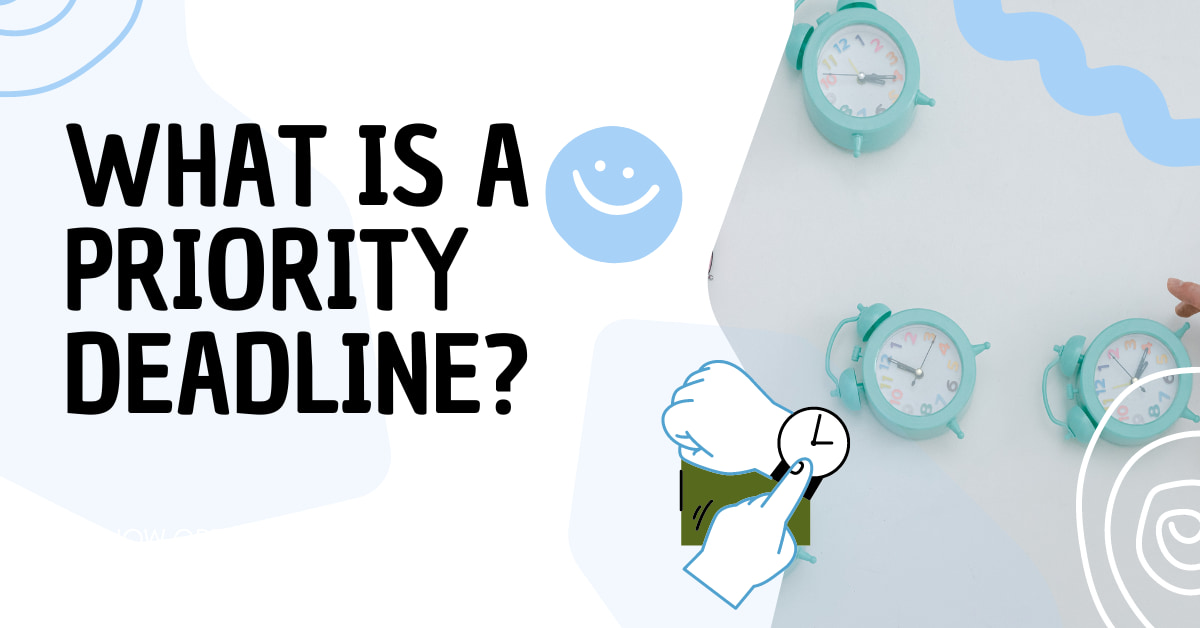As someone who has navigated the complex world of college applications, I can tell you that understanding the priority deadline is like unlocking a secret level in a video game. It’s a unique aspect of the process that can significantly influence your journey and potentially enhance your chances of success.
Deciphering college deadlines can feel like solving a complex equation. Regular deadlines, early action deadlines, rolling admissions – each has its unique characteristics and implications.
But among these, the priority deadline often stands out as a mystery. Ready for more? Let’s figure this out.
Regular, Early, Rolling: The Many Faces of College Deadlines
College deadlines come in various forms. Regular deadlines typically fall in the first few months of the year, early action deadlines are usually at the end of the previous year, and rolling admissions evaluate applications as they arrive until all spots are filled.
It’s like being at a buffet. Some people rush in early to get the best dishes (early action, early decision), some arrive just on time (regular deadline), and others keep coming in until the food runs out (rolling admission).
Each approach has its advantages and disadvantages, and understanding these can help you make an informed decision.
What is the Priority Deadline?
Let’s get straight to the priority application deadline meaning. Then there’s the priority deadline, a term that often raises eyebrows and prompts questions. It’s a deadline that holds promise, but also demands a deeper understanding.
Think of it like a secret handshake. Meeting the priority deadline doesn’t necessarily guarantee you’ll get accepted, but it does give you a certain edge. It’s an opportunity to stand out from the crowd and show the admissions officers that you’re serious about your application.
From my experience, understanding these different types of deadlines and how they can impact your application is crucial. It’s not just about submitting your application, it’s about strategically planning when to submit it to maximize your chances of success. Priority deadlines tend to offer certain advantages, such as a higher chance of acceptance, eligibility for financial aid, or a quicker response time.
Knowing your school’s priority deadline and planning your application process around it can be a game-changer in your college admissions journey.
So, as you navigate the college application process, remember to pay special attention to the priority application deadline. It could be the key to unlocking the door to your dream college.
The Significance of Priority Deadlines

Priority deadlines can be your golden ticket in the grand scheme of college admissions. Meeting this deadline doesn’t guarantee admission, but it does give your application a certain precedence.
It’s like being the first in line at a concert – you might not get a front-row seat, but you definitely have a better chance than those who arrive later.
The Perks of Meeting the Priority Deadline
Meeting the priority deadline often translates into benefits. It could mean a higher chance of acceptance, eligibility for certain scholarships, or a quicker response time. It’s like having a VIP pass – you get certain privileges that can enhance your overall experience.
Decoding the Priority Deadline
Priority deadlines are not merely about being early; they’re about being proactive. They’re about demonstrating your commitment and eagerness to the admissions officers.
Beyond the obvious, priority deadlines carry hidden implications. They signal to colleges your serious intent and can sometimes reflect positively on your application. It’s like dressing up for a job interview – it shows that you’re serious about the opportunity and have taken the time to prepare.
The Maze of College Deadlines
Navigating the maze of college deadlines can be daunting. Information about a school’s priority deadline is usually available on their website or by contacting the admissions office. It’s crucial to seek this information early and plan accordingly.
It’s like having a map for a treasure hunt – it guides you to your destination and helps you avoid unnecessary detours.
Managing multiple college applications and essays can feel like juggling flaming torches. Each application has its unique set of deadlines. Staying organized and keeping track of these dates is essential to ensure none slips through the cracks.
Schools with priority deadlines
As you know, each school has its own earlier date and final date of admissions—the same with priority admission.
| University | Priority Deadline | Regular Deadline |
|---|---|---|
| University of Pittsburgh | Rolling | Rolling |
| University of Minnesota–Twin Cities | Rolling | Rolling |
| University of Wisconsin–Madison | Rolling | Rolling |
| University of Illinois–Urbana-Champaign | November 1st | December 1st |
| Ohio State University–Columbus | November 1st | February 1st |
| University of Michigan–Ann Arbor | November 15th | February 1st |
| University of Maryland–College Park | November 15th | January 20th |
| Penn State University–University Park | Rolling | Rolling |
| Purdue University–West Lafayette | November 1st | January 15th |
| Indiana University–Bloomington | November 1st | February 1st |
| Michigan State University | Rolling | Rolling |
| Rutgers University–New Brunswick | December 1st | January 31st |
| University of Iowa | Rolling | Rolling |
| University of Nebraska–Lincoln | Rolling | Rolling |
| University of Kansas | Rolling | Rolling |
| Iowa State University | Rolling | Rolling |
| Arizona State University–Tempe | November 1st | February 1st |
| Temple University | November 1st | February 1st |
| Oregon State University | February 1st | March 15th |
| West Virginia University | December 1st | February 1st |
This table should provide a clear comparison of the priority deadlines and regular deadlines for each university. Remember, “rolling” aka rolling admission, means the university continues to accept college applications until all spots are filled.
It’s always a good idea to apply as early as possible in these cases. You can consult one of the best college admission consultants to help you with these deadlines. They know their job well, and will surely give you a better understanding on how to work with your college admissions.
What Happens When You Miss a Priority Deadline?
Missing a priority deadline is not the end of the world, but it does have consequences. It might mean missing out on certain benefits or waiting longer for a decision. It’s like missing the bus – you’ll still reach your destination, but it might take a little longer and require a bit more effort.
Steps to Take After Missing a Priority Deadline
If you miss a priority deadline, don’t panic. Reach out to the admissions office, explain your situation, and ask about your options. It’s about damage control and making the best of the situation.
It’s like spilling coffee on your shirt before a big meeting – you clean up as best as possible and carry on confidently.
Strategies for Meeting the Priority Deadline
Meeting the priority deadline requires planning and discipline. Start your application process early, set reminders, and pace yourself. It’s about beating the clock without compromising the quality of your application.
Submitting a stellar application before the priority deadline is an art. It’s about showcasing your strengths, your uniqueness, and your potential in a concise and engaging manner.
The Role of Priority Deadlines in Financial Aid
Priority deadlines often play a crucial role in scholarship eligibility. Many colleges use these deadlines to determine who gets first dibs on institutional aid. Meeting the priority deadline can potentially open doors to financial resources. It’s like applying for a grant – you need to meet the deadline to be considered for the funding.
The Free Application for Federal Student Aid (FAFSA) also has a critical connection with priority deadlines. Some colleges use the priority deadline to prioritize the allocation of federal and state aid.
Thus, understanding this connection can be a game-changer in your financial aid strategy.
Conclusion
As the final countdown begins, embracing the importance of priority deadlines becomes crucial. They are not just dates but strategic milestones in your college application journey. It’s like a chef meticulously following a recipe – each step and ingredient is crucial to the final outcome.
Your future starts now. Make priority deadlines work for you. Use them as a tool to demonstrate your commitment, secure financial aid, and potentially increase your chances of acceptance. If you need help, you can always hire a college admission consultant who will guide you through each step of your college application.
Remember, the journey doesn’t end with the submission of your application or the passing of a deadline. It continues as you wait for decisions, weigh your options, and finally, make your choice.
What Comes After the Priority Deadline?
The waiting game begins after the priority deadline. It’s a period of anticipation, hope, and sometimes, anxiety. But remember, no matter the outcome; you’ve taken a significant step towards shaping your academic future.
FAQ
What is a priority deadline in college admissions?
A priority deadline is a date set by colleges by which students should submit their applications to receive certain benefits. These benefits could include a higher chance of acceptance, scholarship eligibility, or a quicker response time. It’s not a final date, but meeting this deadline can offer advantages in the admissions process.
How does a priority deadline differ from an early action or early decision deadline?
While all these deadlines are earlier than the regular deadline, they serve different purposes. Early action and early decision deadlines are for students with a clear first-choice school and want to hear back early. Early decision is binding, meaning you’re committed to attending that school if you’re accepted. Priority deadlines, on the other hand, are not binding and are used by schools to manage the flow of applications and offer benefits like early consideration for financial aid or special programs.
What happens if I miss the priority deadline?
Missing the priority deadline doesn’t mean your application won’t be considered, but you might miss out on certain benefits. For instance, you might receive a decision later than those who met the priority deadline, or you might have less chance of receiving institutional financial aid. If you miss the priority deadline, submitting your application before the final date is still important.
Does meeting the priority deadline increase my chances of getting into a college?
Yes. Meeting the priority deadline can increase your chances of acceptance, as some colleges review and accept applications on a rolling basis. However, it doesn’t guarantee admission. Admissions officers consider many factors, including your academic performance, extracurricular activities, essays, and letters of recommendation.
Are priority deadlines connected to financial aid?
Yes, priority deadlines often play a significant role in financial aid. Many colleges use the priority deadline to determine eligibility for certain types of financial aid, including institutional scholarships. In addition, some colleges use the priority deadline to prioritize the allocation of federal and state aid. Therefore, meeting the priority deadline can be crucial for maximizing your financial aid opportunities.

